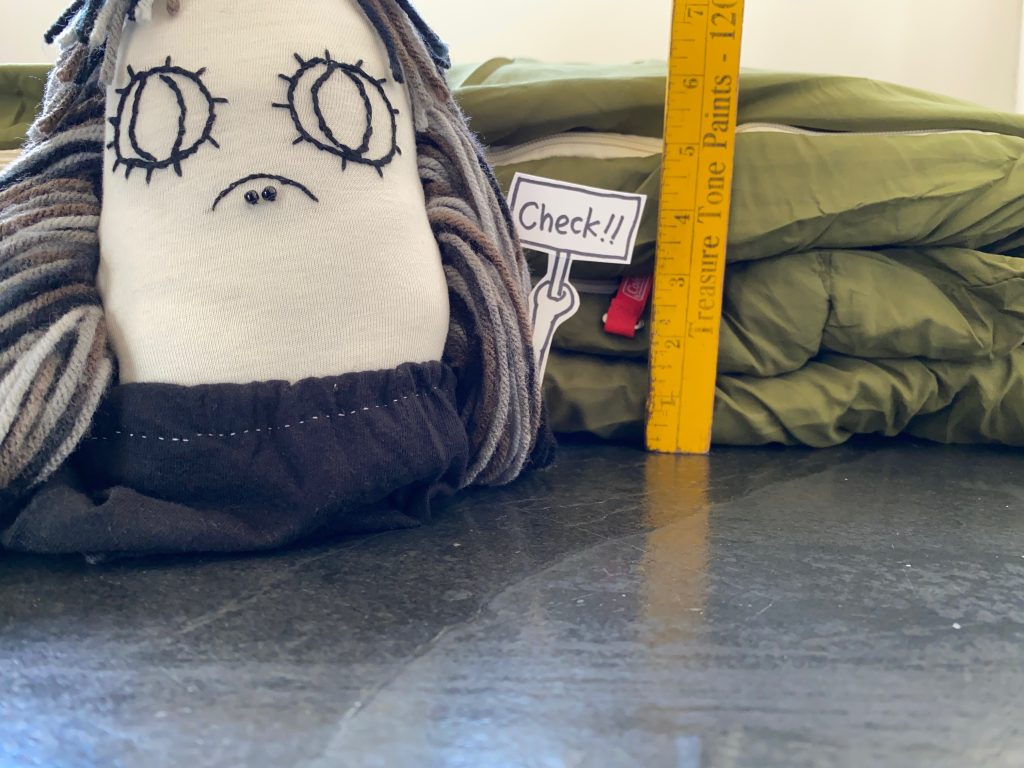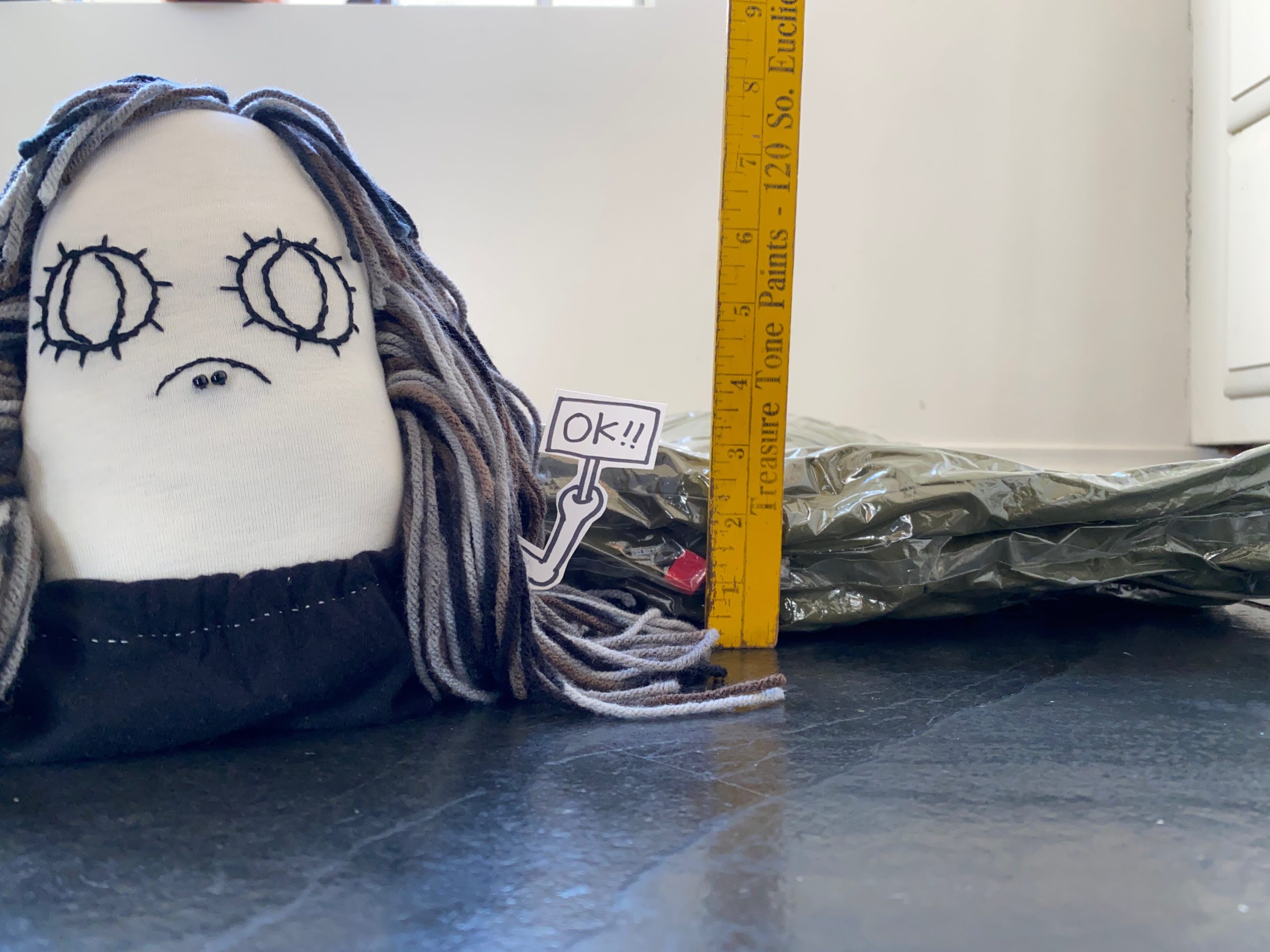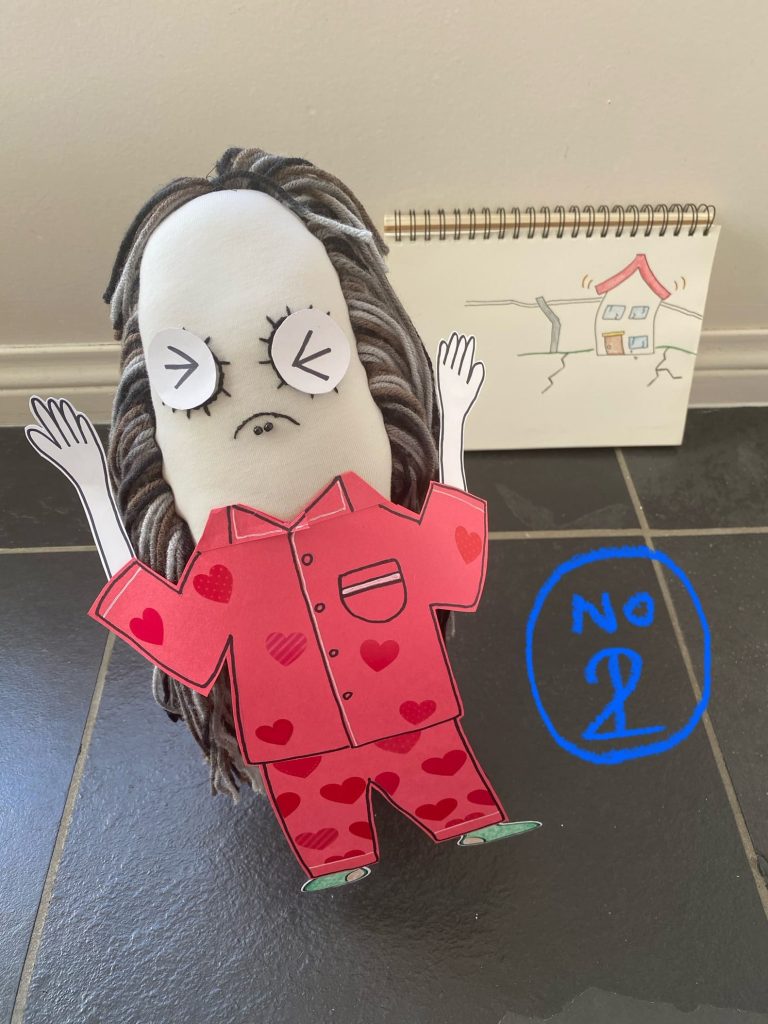
What emergency cold gear should I prepare for evacuation?
“I should just try to wear as many layers of clothes as possible, right?”
“I can get some warm blankets at the emergency shelter, I will be fine.”
“I live in warm climate, so I don’t need to worry.”
Say you’re caught in a major disaster. Let’s compare two different scenarios: one where you prepare and evacuate before the disaster strikes, and another where you evacuate afterward. These two situations will be very different, and when we prepare our emergency cold-weather gear for evacuation, we have to think of both. We also have to think about what kinds of cold gear we can bring to the evacuation shelter or safe space. We must consider and prepare countermeasures against hypothermia (see post #56).
Keep in mind, people living in an areas with warm climates might also experience sudden disasters. For example, a big volcanic eruption or a sudden torrential rain could result in a lack of sunlight or drenched clothes, which in turn could lead to hypothermia, even in areas that are typically warm.
Preparing emergency cold gear before the disaster, you might have enough time to get everything ready that you need for an evacuation. For example, if the government announces an evacuation order far enough in advance, then at the very least, you can put on a bunch of warm clothes. On the other hand, preparing your emergency cold gear after the disaster, you might not even have time to change out of your pajamas. You might find yourself stuck in your PJ’s. Moreover, your home might be completely destroyed, and then you won’t have anything at all.
If you can evacuate to somebody else’s home or to a hotel, you will be lucky. If you can reach an emergency shelter, even if it’s overcrowded with people, you will be lucky. Worst case scenario, if there is nowhere to take shelter, you will need good emergency cold-weather gear to stay warm.
Set up emergency cold-weather gear “before” the disaster.
- Wear warm clothes, as much as possible, so we won’t need to carry it separately (hat, scarf, gloves, raincoat, glasses, mask, helmet, etc.)
- Blanket and sleeping bag: Use a compression bag and make it small. Shelters’ blankets might trigger allergies or asthma.
- Sleeping pad, cardboard or newspapers: Helps prevent body heat transferring to the cold ground/floor. You need to have a space between your body and the ground. Just spreading a sheet on the floor is not enough to survive the night, in a cold climate.
- Emergency thermal blanket: Wrap your body and cover up with the blanket. Don’t leave any space between your body and the blanket.
This is my sleeping bag inside a compression bag.
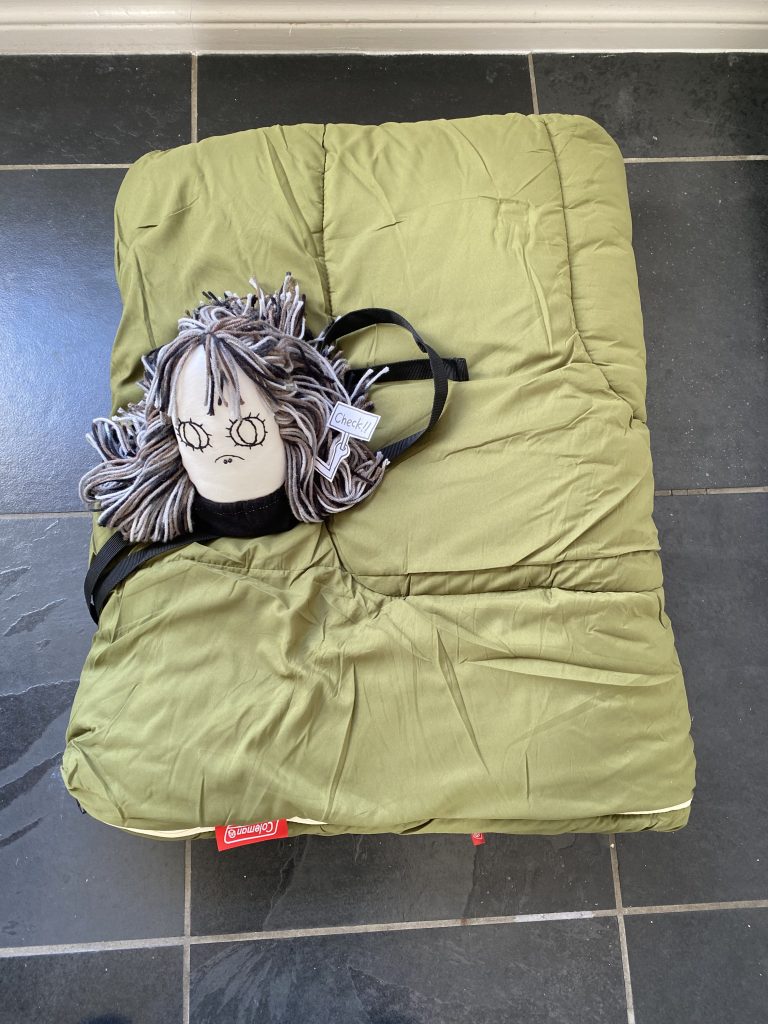
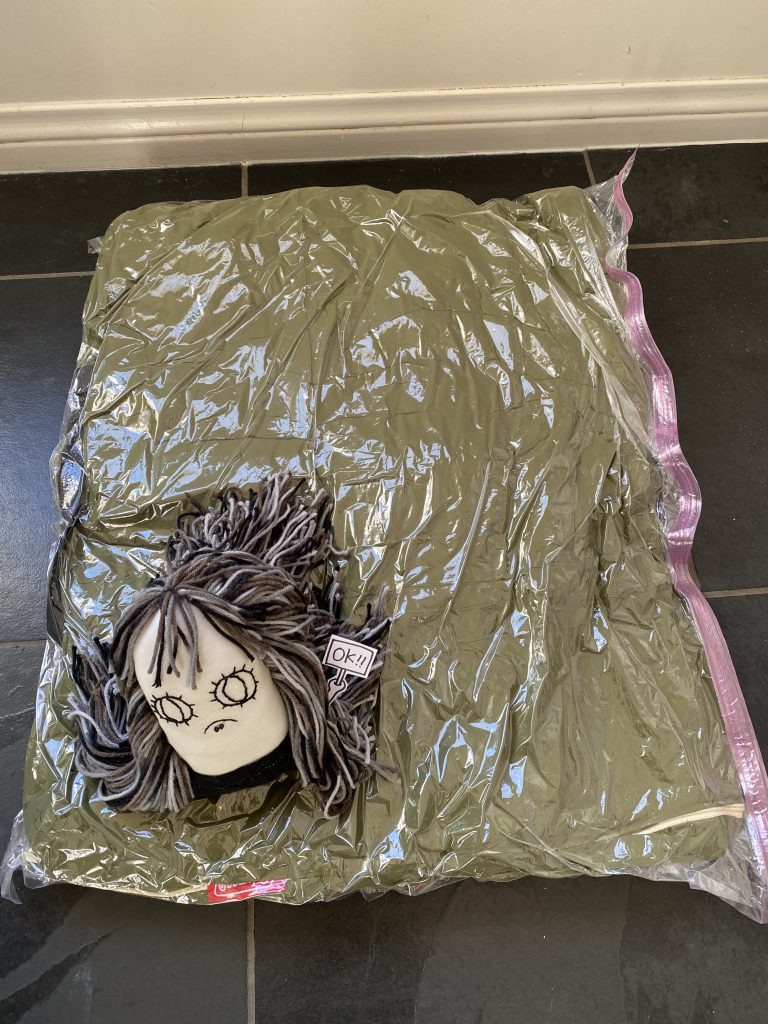
If you can use your car for evacuation, you will be able to stay in your car and keep warm until the gas is gone. It’s a good idea to always keep a full tank of gas and a charged car battery, for emergencies. But please be careful about carbon monoxide poisoning. Do not keep your car running while you sleep. Only run it for short periods of time and ensure that the exhaust pipe is clear of snow and other obstructions.
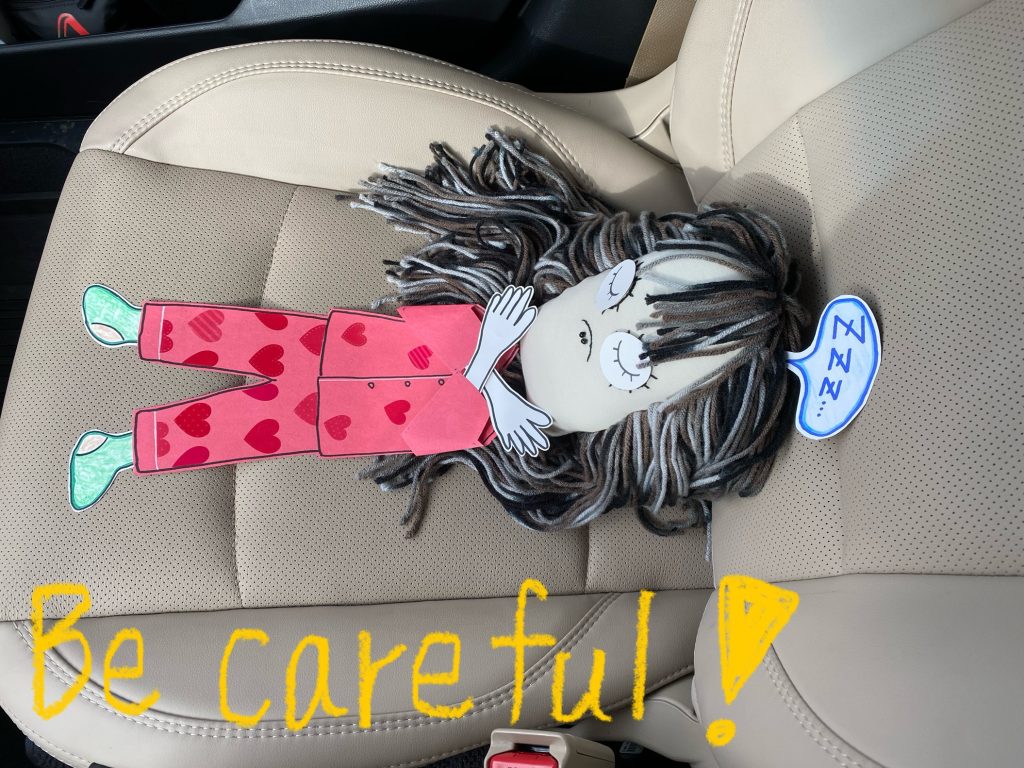
Set up emergency cold-weather gear “after” the disaster.
- Wear warm clothes, daily. (Put on warmer clothes before you run the heater in your home. Try to wear more clothes first, and then turn on your heater, if you still need it. When you feel hot, it’s not good to take off your clothes before turning down the heat. Turn down the thermostat or turn off the heater first, then take off the extra clothes.)
- Set a pair of shoes at the entrance to your home, or along the evacuation route in your home. Keep them there all the time, for emergencies. (If an earthquake occurs in the middle of the night, you might be barefoot or wearing socks. You need shoes to protect your feet.)
- Remove any wet clothing and replace them with warm, dry clothes, as soon as possible.
- Set up an extra car key (or other keys you might need) at the entrance to you home or along your evacuation route. This is especially important if you set up emergency evacuation supplies in your car, supply shed, or the like. (Keep extra, warm clothes and shoes in your car all the time.)
- Visualize and maintain a readiness in the back of your mind. Ask yourself “what will I do if the big earthquake hits right now?”
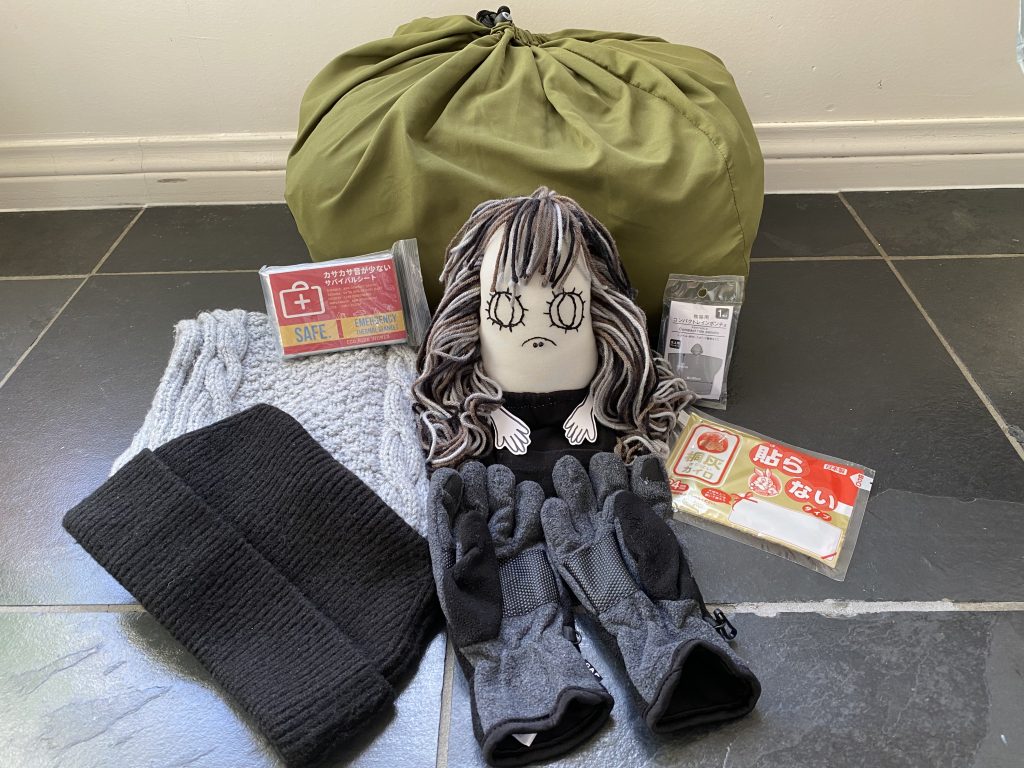
I live in a small apartment, and I don’t have a wide entrance or a lot of space around my entryway. But I think my car, which I park on the street, will survive a big earthquake (unless a massive sinkhole opens up in the ground underneath it). So I set up emergency cold-weather gear in my car. If you have storage space outside of your home, you should set up an outdoor storage box and put emergency cold-weather gear and other evacuation supplies in it. Remember, set it up in a place that is unlikely to be crushed in a disaster.
Nowadays, many things in our lives are easy, plentiful and convenient. Are you ready to suddenly live with limited resources?
Put some thought into the pajamas that you wear to bed. You might end up wearing those PJ’s for long while, until help arrives.
See you next time.
Remember, “Protect your life by yourself” (自分の命は自分で守る). You need to survive first, and then you need your emergency supply. No matter how well you prepared your emergency supplies, if you die, then all of your preparations will have been for nothing. First and foremost, keep your health up all the time. Build your stamina so that if you need to, you can evacuate as quickly as possible. Stay healthy.
